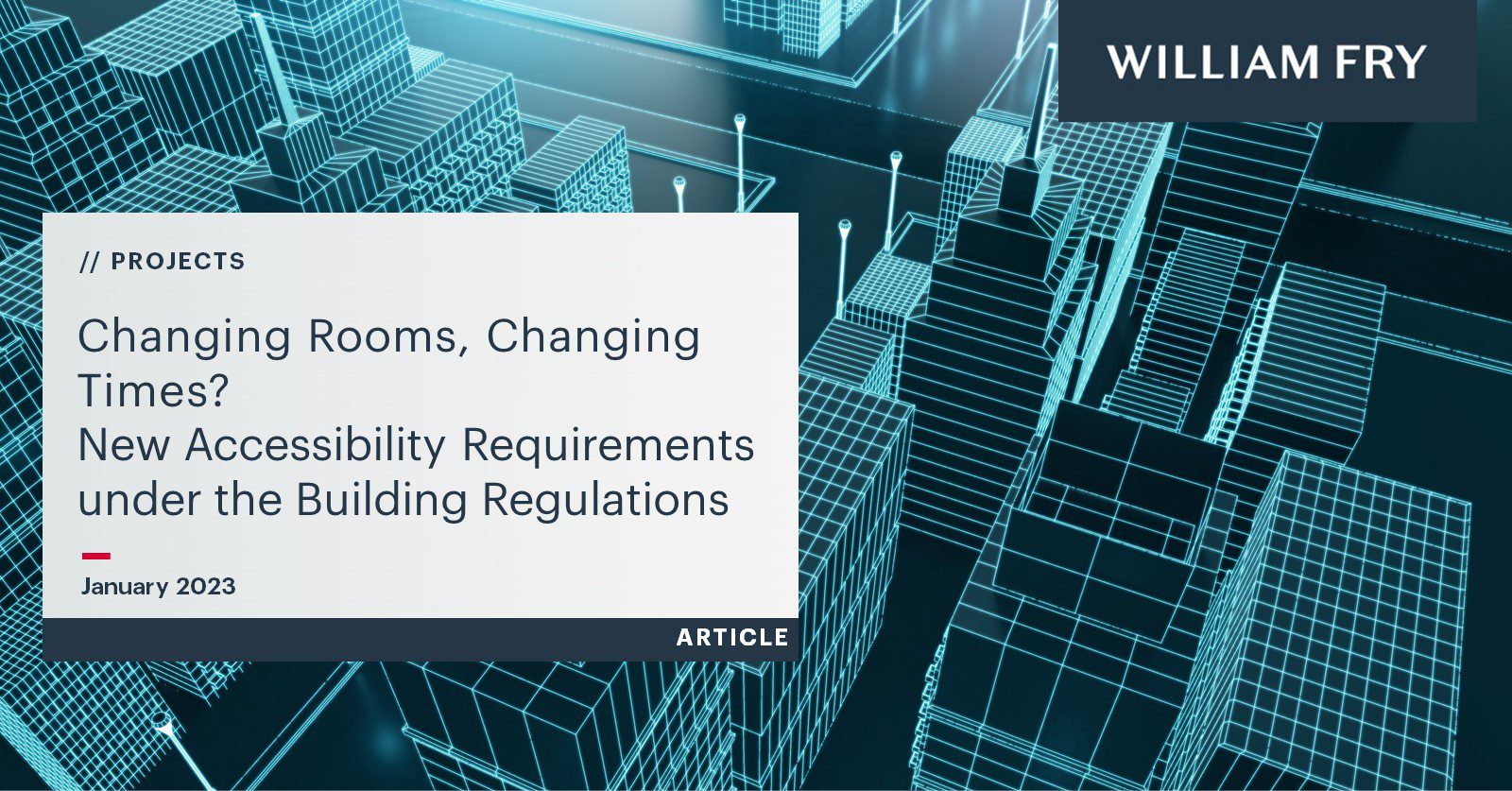In late November 2022, the Building Regulations (Part M Amendment) Regulations 2022 (the 2022 Part M Regulations) were published.
The 2022 Part M Regulations follow on from the Building Control (Amendment) Regulations 2018 (the 2018 Regulations) and revoke the Building Regulations (Part M Amendment) Regulations 2010 (the 2010 Regulations) (see our article here for further details), amending obligations concerning the changing facilities in buildings, having regard to the building use and size.
When do the 2022 Part M Regulations take effect?
The 2022 Part M Regulations are operative from 1 January 2023, subject to certain transitional periods.
To what do the 2022 Part M Regulations apply?
The 2022 Part M Regulations apply to works or to a building in which a material change of use takes place, where the works commence or change of use take place on or after 1 January 2024, except where:
- a planning application is made on or before 31 December 2023 for planning permission or approval under the Planning and Development Act 2000 (as amended);
- a notice of proposed development under Part 8 of the Planning and Development Regulations 2001 (as amended) has been given by a local authority under article 81 of those Regulations on or before 31 December 2023; or
- a fire safety certificate or a disability access certificate (DACs) under the Building Control Regulations 1997 to 2021, in respect of the works or buildings, has been granted on or before 31 December 2023,
and where the structure of the external walls of the building has been erected by 31 December 2025.
Part M does not apply to works with extensions to and material alterations of existing dwellings, provided such works do not create a new dwelling.
Requirements of the 2022 Part M Regulations
The 2022 Part M Regulations amend the Building Regulations 1997 to 2022 to require the provision of a changing places facilities in buildings, having regard to the building’s use and size.
A new definition of changing places toilet is included. Where sanitary facilities are provided in a building or works which fall within the scope as outlined above, adequate provision and space should be made for persons with a range of abilities which may require assistance to access and use a changing places toilet having regard to the use and size of the building.
Affected buildings include the newly defined “institutional building”, which the 2022 Part M Regulations describes as capturing hospitals, nursing homes, homes for older people or children, school, or other similar establishment used as living accommodation or for the treatment, care or support of people with illness, mental health difficulties, or disabilities, where such people sleep on the premises.
Associated Technical Guidance accompanying the publication of the 2022 Part M Regulations will need careful consideration for works which fall within the scope outlined above to demonstrate compliance with the building control regime, including but not limited to DACs, which are a mandatory statutory requirement.
Effects
The 2022 Part M Regulations aim to improve accessibility to buildings for persons with a range of abilities. Property owners, contracting authorities, contractors, designers, and project, asset and facilities managers must carefully consider designing, constructing and managing works and buildings to comply with these new accessibility requirements.
Contact Us
For more information or advice on the projects and construction contracts requirements relating to statutory requirements for works or alterations to buildings, including accessibility, please contact Cassandra Byrne, Jarleth Heneghan, Liam McCabe or your usual William Fry contact.




